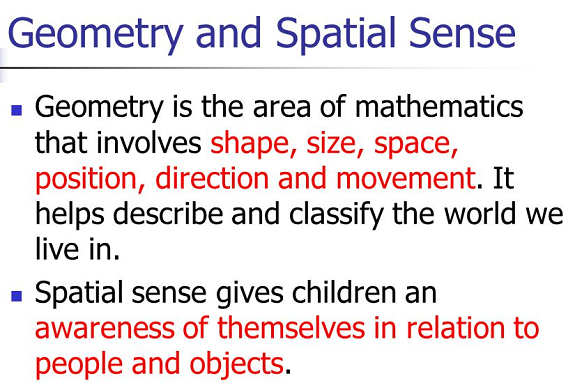Unit 4: Geometry and Spatial Sense
Unit 4: Geometry and Spatial Sense

Unit 4: Geometry and Spatial Sense

Unit 4: Geometry and Spatial Sense
This unit emphasizes the use and meaning of many words and properties of geometry.
Unit Focus
Number Sense, Concepts, and Operations
- Understand concrete and symbolic representations of real numbers in real-world situations.
- Understand that numbers can be represented in a variety of equivalent forms, including integers, fractions, decimals, percentages, scientific notation, exponents, radicals, and absolute value.
- Add, subtract, multiply, and divide real numbers, including square roots and exponents, using appropriate methods of computing, such as mental mathematics, paper and pencil, and calculator. (MA.A.3.4.3)
- Use estimation strategies in complex situations to predict results and to check the reasonableness of results.
Measurement
- Use concrete and graphic models to derive formulas for finding perimeter, area, surface area, circumference, and volume of two- and three-dimensional shapes, including rectangular solids, cylinders, cones, and pyramids.
- Use concrete and graphic models to derive formulas for finding angle measures.
- Relate the concepts of measurement to similarity and proportionality in real-world situations.
- Solve real-world and mathematical problems, involving estimates of measurements, including length, perimeter, area, and volume and estimate the effects of measurement errors on calculations.
Geometry and Spatial Relations
- Understand geometric concepts such as perpendicularity, parallelism, congruency, and similarity.
- Represent and apply geometric properties and relationships to solve real-world and mathematical problems including ratio and proportion.
- Using a rectangular coordinate system (graph), apply and algebraically verify properties of two-dimensional figures.
Vocabulary
Lesson Reading
Videos and Interactives (Click on Images to View Content)

